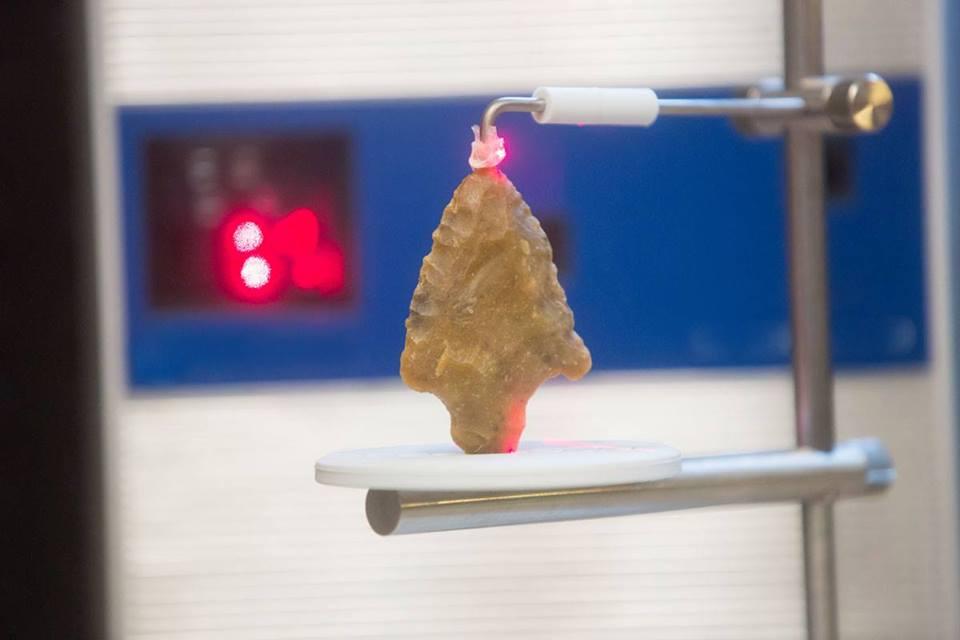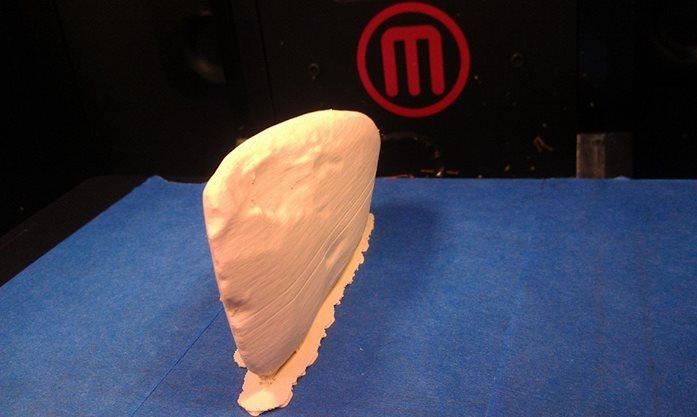 Over the past several months, we have found that the process of taking ancient artifacts and creating digitized replicas of them is becoming much more common. These digital replicas may be converted to files which just about anyone with access to a 3D printer can recreate. For one electronics tech at Mercer University School of Engineering, this has become not only a hobby, but also a movement which he sees as potentially providing many new educational experiences for students and history buffs alike.
Over the past several months, we have found that the process of taking ancient artifacts and creating digitized replicas of them is becoming much more common. These digital replicas may be converted to files which just about anyone with access to a 3D printer can recreate. For one electronics tech at Mercer University School of Engineering, this has become not only a hobby, but also a movement which he sees as potentially providing many new educational experiences for students and history buffs alike.
Jeremy Barker started out as a history major before starting work in IT and electronics jobs. He has always been interested in combining what he loves with what he does to earn a living. Currently his job encompasses teaching students how to do hands-on things such as creating printed circuit boards and soldering components, as well as other general electronics troubleshooting.
“One day, it occurred to me that I could scan artifacts,” Barker tells 3DPrint.com. “I did some research and found the work of Cosmo Wenman on the West Coast and Dr. Bernard Means of Virginia Commonwealth University. Both approached the subject in different ways, but they were not mutually exclusive. Their work inspired me to spend my hours after work scanning any artifacts I could get my hands on. I basically borrowed anything that anyone would loan me, which were mostly pottery shards and arrow heads. I also started using photogrammetry when I realized that my desktop scanner couldn’t do everything that I wanted it to do.”
Barker has an extreme affinity for history, as well as an equal interest in education and research. It is impossible for every school to get their hands on the very artifacts that are studied within a curriculum. For example, when studying ancient civilizations, it is great to be able to view photos of spearheads, pottery, and other tools from these times, but it becomes a much more immersive, interactive, and interesting experience for students when they can actually touch tangible replicas of these objects. This is what 3D technology, including scanning and printing, provides.
“Creating digital and physical copies of artifacts leads to more educational opportunities for kids at school and it also provides a way to crowd source research,” explained Barker. “Instead of an artifact being stowed away in a private collection or museum storage, these artifacts are now available to the public anywhere that there’s internet access. Thousands of people can now study an artifact online all at once. Museums can share their collections with no regard for available exhibit space. And full color replicas can be printed in unlimited numbers, providing any teacher with new ways of enriching classroom experiences. A history lesson can be greatly enhanced by letting students touch a printed copy of an artifact that would’ve once been off limits.”
While the projects that Barker is embarking on are not specifically “university projects,” they are in fact being done in conjunction with Mercer Engineering. The dean of the school has aided Barker by allowing him to use the university equipment, as well as providing him with ways in which he can work closely with local museums. Those museums include Andersonville Prisoner of War Museum, Ocmulgee National Monument, and the Jimmy Carter National Historic Site.
Barker is still looking to find grants to fund further work, as his ultimate goal is to work with all of Georgia’s museums to create an online repository of artifacts similar to what the Smithsonian Museum is doing. As for the technology, software, and materials that Barker is using, he explains:
“I’m using the NextEngine scanner, Autodesk Recap 360, and a Replicator 2x for plastic, Laybrick, and Laywood prints. Currently, I’m working with two different companies to get color prints. However, I have plans to do it myself in the future if we areable to get the grants that we want.”
Many of Barker’s scans can be found on his Sketchfab profile, where you can see that he isn’t only scanning artifacts but people and other things as well.
What do you think about Jeremy Barker’s dedication to this idea of creating digitized, 3D printable replicas of the world’s ancient artifacts? Discuss in the 3D printed artifacts forum thread on 3DPB.com. Check out some more photos below:
Subscribe to Our Email Newsletter
Stay up-to-date on all the latest news from the 3D printing industry and receive information and offers from third party vendors.
Print Services
Upload your 3D Models and get them printed quickly and efficiently.
You May Also Like
3D Printing News Briefs, June 11, 2025: Sustainability, Automotive Tooling, & More
We’re starting with sustainability news in today’s 3D Printing News Briefs, as EOS has strengthened its commitment on climate responsibility, and Zestep is making 3D printing filament out of eyewear...
3D Printing 50 Polymer Stand-In Parts for Tokamaks at the PPPL & Elytt Energy
Of all the world’s things, a tokamak is one of the hardest, most complex, expensive and exacting ones to make. These fusion energy devices make plasma, and use magnets to...
3D Printing News Briefs, May 17, 2025: Color-Changing Materials, Humanoid Robot, & More
We’re covering research innovations in today’s 3D Printing News Briefs! First, Penn Engineering developed 3D printed materials that change color under stress, and UC Berkeley researchers created an open source,...
Firehawk Aerospace Partners with JuggerBot 3D, Gets $1.25M from AFWERX for 3D Printed Propellants
Texas-based Firehawk Aerospace, an advanced energetic materials firm that works with aerospace and defense applications, announced a strategic partnership with JuggerBot 3D, an Ohio-based large-format 3D printer manufacturer. Together, the...







































